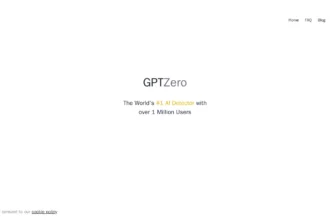The limits for the o1-preview model indicate a weekly usage framework, specifically allowing users to send up to 50 messages per week. This is in contrast to the o1-mini model, which has a daily message limit of 50 messages. The introduction of these models comes with the understanding that they are part of a preview phase, thus making them subject to adjustments by OpenAI over time.
When examining the capabilities of the o1-preview and o1-mini models, it’s noteworthy that o1-preview cannot browse external websites or accept file uploads, which distinguishes it from open models that offer more comprehensive functionality.
With the increase from the previous limit of 30 messages weekly, users now have a greater capacity for interaction at 50 messages within that period. Users should remain cognizant of these aspects as they navigate the limitations and functionalities provided by these models.
Additionally, both models allow for manual selection in the model picker, ensuring ease of access. Despite the distinction in limits—weekly for o1-preview and daily for o1-mini—both models provide a significant rate for requests at 10,000 requests per minute, as noted in various usage tiers outlined by OpenAI.
Table of Contents
ToggleWhat implications do the rate limits on o1-preview and o1-mini have on user experience and model interactions?
The introduction of rate limits for OpenAI’s o1-preview and o1-mini models has several implications for user experience and interactions with these models. With a limit of 30 messages per week for o1-preview and 50 for o1-mini, users may encounter restrictions on how frequently they can engage with these models. This could potentially hinder the fluidity of interactions, especially in scenarios where users rely on extensive back-and-forth conversations or require multiple queries within a short timeframe. The structured nature of these limits compels users to plan their interactions more strategically, possibly leading to pauses in engagement as they wait for the limits to reset.
From a development perspective, the interaction design might be further complicated by users attempting to maximize their usage within these confines. Developers need to consider how to guide users in navigating these limits effectively, ensuring they understand the constraints while still providing valuable functionalities. This could involve creative solutions, such as screen prompts or usage trackers that help users stay informed about their remaining interactions, fostering a more engaging and productive experience despite the limitations.
Furthermore, as these models are labeled as “preview,” their usage limits are subject to change. As such, users must be adaptable to possible alterations in these constraints. Developers and users alike might need to remain vigilant regarding updates and modifications, which could either alleviate or exacerbate current limitations. Thus, the overall impact hinges not only on the existing rate limits but also on how OpenAI manages user feedback and iterates on these preview models moving forward.–
How do the capabilities of the OpenAI o1 models compare to previous versions in specific fields like coding and science?
The OpenAI o1 model series represents a significant leap forward in the capabilities of artificial intelligence, particularly in fields such as coding and science. In coding, the o1 models demonstrate enhanced proficiency in generating, debugging, and executing complex code. The shift to this new series allows developers to leverage these advanced features to create and manage multi-step workflows, thus streamlining the software development process.
The introduction of o1-mini further refines this by delivering faster and more cost-effective reasoning, tailored specifically for coding tasks, which significantly improves developer productivity and efficiency.
In the realm of science, the o1 models exhibit groundbreaking capabilities by enabling researchers, such as those in healthcare or physics, to engage in sophisticated tasks that were previously limited by older models. For instance, o1 can assist healthcare professionals by annotating intricate cell sequencing data, providing insights and accelerating research processes.
Moreover, physicists can utilize the model to generate mathematical formulas essential for complex fields like quantum optics. This demonstrates that the o1 models are designed not only to enhance computational abilities but also to unlock new avenues for research and innovation in various scientific disciplines.
The advancements represented by the o1 series in both coding and science are underpinned by complex reasoning abilities that redefine what AI can achieve. This marks a new beginning for how AI systems are categorized and utilized, emphasizing their role as powerful tools capable of tackling high-level cognitive tasks across a variety of fields.
These enhancements make the o1 models a pivotal resource for professionals looking to push the boundaries of their disciplines.
In what ways can developers effectively utilize the OpenAI o1-mini in cost-sensitive applications while maintaining performance?
Utilizing the OpenAI o1-mini in cost-sensitive applications while ensuring performance involves several strategic considerations. As a lightweight model, o1-mini offers an impressive 80% cost reduction compared to its counterpart, o1-preview.
This makes it particularly advantageous for projects that prioritize budget constraints without significantly compromising output performance. The model is optimized for tasks that demand reasoning capacities, such as generating and debugging code, making it suitable for developers focused on coding-related applications.
One of the primary advantages of o1-mini is its speed. It can handle an increased query rate of up to 1,000 queries per minute compared to lower limits of other models. This scalability allows developers to implement the model in real-time applications without significant latency issues, maintaining user engagement and satisfaction. For developers working on applications with high interaction rates, this attribute can significantly reduce infrastructure costs while ensuring efficient performance.
Moreover, the o1-mini’s focused capabilities permit developers to streamline their projects by leveraging its strengths in reasoning over extensive world knowledge. For instance, in situations where nuanced understanding or context is not required, o1-mini can deliver results quickly and efficiently. This specialization allows developers to allocate resources more effectively and achieve a balance between cost efficiency and application performance. Utilizing such a tailored approach enables developers to maximize the potential of o1-mini without incurring unnecessary expenses.





